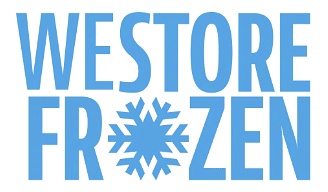
Texas Cold Storage Provider Bets on AI to Slash Costs, Boost Efficiency
We Store Frozen is deploying AI-powered pallet tracking across its Texas facilities, aiming for a 17% cost reduction and setting a new standard in cold chain logistics. But what does this mean for workers?
Texas Cold Storage Provider Bets on AI to Slash Costs, Boost Efficiency
HOUSTON, TX – October 28, 2025 – We Store Frozen, a leading cold storage and logistics provider in Texas, is rolling out a comprehensive AI-powered automation system across its facilities, partnering with Zimark, a technology subsidiary of global shipping giant ZIM. The move signals a growing trend towards intelligent automation within the traditionally labor-intensive cold chain logistics sector, promising increased efficiency, reduced costs, and enhanced transparency – but also raising questions about the future of warehouse work.
According to a press release, We Store Frozen expects the implementation of Zimark’s ‘Smart Pallet Tracking’ and ‘Forklift Vision’ technology to deliver a 17% reduction in operational costs and a 9% boost in EBITDA. The company is betting that this investment will not only improve its bottom line but also solidify its position in a competitive market dominated by larger players like Lineage Logistics and Americold.
“This isn’t just about adopting new technology; it’s about fundamentally changing how we operate,” says a company representative. “We’re aiming for complete visibility throughout our entire network, from the moment a pallet enters our facility to the moment it leaves. This level of transparency will allow us to optimize our processes, minimize errors, and deliver a better service to our customers.”
Beyond the Hype: How Does the Technology Work?
The core of the automation system lies in Zimark’s AI-powered cameras and real-time data analytics. ‘Smart Pallet Tracking’ uses computer vision to identify and track pallets as they move through the warehouse, eliminating the need for manual scanning and reducing the risk of misloads or lost inventory. ‘Forklift Vision’ guides forklift operators, improving efficiency and safety. The system creates a digital map of the warehouse, allowing for precise location tracking and optimized routing.
While Zimark’s website details the technology’s capabilities, public case studies of deployments outside of We Store Frozen are currently limited. This makes it challenging to independently verify the claimed performance improvements. However, experts suggest that the potential benefits of such a system are significant.
“The cold chain industry is ripe for disruption,” says an independent logistics consultant. “Manual processes are still prevalent, leading to errors, delays, and high labor costs. AI-powered automation can address these challenges, improving efficiency and reducing waste. The key will be seamless integration with existing systems and a robust data analytics platform.”
A Competitive Edge in a Growing Market
The Texas cold storage market is experiencing robust growth, driven by increasing demand for temperature-controlled warehousing for food, beverage, and pharmaceutical products. With major ports and a large agricultural base, Texas is a critical hub in the national supply chain. This increased demand, coupled with rising labor costs, is driving companies to explore automation solutions.
“The margin for error in the cold chain is very small,” explains a supply chain manager at a food distribution company. “Maintaining temperature integrity is paramount. Any disruption can lead to spoilage and significant financial losses. Technologies like AI-powered tracking can help mitigate these risks.”
The Human Cost of Automation: What About the Workers?
While the potential benefits of automation are clear, the impact on the workforce remains a critical concern. The implementation of AI-powered systems often leads to a reduction in manual labor positions, raising questions about job security and the need for workforce retraining.
“We understand that automation can be disruptive,” says a company representative. “We are committed to providing our employees with the training and support they need to adapt to the changing landscape. We are exploring opportunities to upskill our workforce and create new roles in areas such as data analytics and system maintenance.”
However, some labor advocates express skepticism about the long-term impact of automation on the workforce. “While companies may promise retraining programs, these often fall short of addressing the skills gap,” says a representative from a local labor union. “We need to ensure that workers are not left behind in the transition to a more automated future.”
One warehouse worker, speaking anonymously, expressed concern about the future. “I’ve been working in this warehouse for over 10 years,” they said. “I’m worried that my job will be eliminated. I don’t have the skills to work with these new technologies.”
Looking Ahead: The Future of Cold Chain Logistics
The implementation of AI-powered automation at We Store Frozen is a significant step towards the digitalization of the cold chain logistics sector. While the technology holds immense promise for improving efficiency and reducing costs, it also raises important questions about the future of work and the need for responsible innovation.
The success of this initiative will depend on several factors, including seamless integration with existing systems, robust data analytics capabilities, and a commitment to workforce retraining. As the demand for temperature-controlled warehousing continues to grow, companies that embrace automation and prioritize the well-being of their workforce will be best positioned to thrive in the years ahead.
The industry will be watching closely to see if We Store Frozen’s investment pays off, and whether other cold storage providers follow suit, accelerating the adoption of AI and shaping the future of cold chain logistics.
